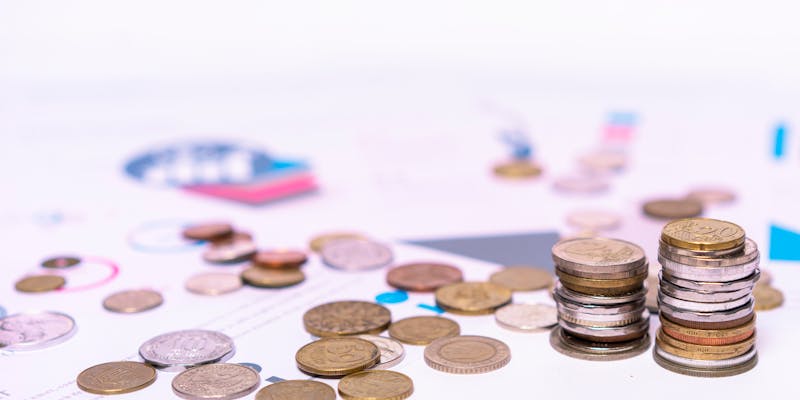

How Interest Rate Differentials Shape Global Financial Decisions
Nov 26, 2024 By Elva Flynn
There are interest rates in mortgages, savings accounts, and government bonds. However, when interest rates between two countries are different, something interesting happens. The difference in interest rate differential (IRD) plays a quiet but powerful role in how global finance works.

Whether that's impacting the currency markets or the flow of capital, IRDs reach further than just a bank or a governmentthey affect consumers, businesses, and investors, too. So, what is IRD, and why does it matter? Let's dig into the details.
What Is Interest Rate Differential (IRD)?
An interest rate differential (IRD) is, at its heart, a measure of the difference in interest rates between two countries or financial instruments. It's like looking at two savings accounts, one with a higher interest rate than the other, except on a bigger, international scale. Other interest rates are set by countries in the global market to manage its inflation, among others, or to stimulate growth or stabilize its economy.
When investors and institutions are looking for better returns across borders, the IRD becomes important. Investors may actually run to U.S. assets if, say, the U.S. has a higher interest rate than Japan. Like banks and hedge funds, these differentials are used to make a living as banks and hedge funds shift vast sums of money around between global markets. The ripple effects of this cross-border flow are most obviously felt in currency exchange rates.
How Does IRD Impact Currency Exchange Rates?
Currencies don't just rise and fall by accident. A key factor behind their movement is the interest rate differential. When investors want higher returns, they move their money into countries offering better interest rates. As they exchange their home currency for foreign currency, demand increases for that currency, often causing it to appreciate.
For example, if the interest rate in the U.S. is higher than that of the European Union, investors might sell euros and buy U.S. dollars to benefit from better returns. This can strengthen the dollar relative to the euro. This dynamic between IRDs and currency exchange is known as the carry tradewhere investors borrow in a low-interest currency and invest in a high-interest one.

But things can change. A sudden shift in one countrys interest rates, or economic uncertainty, can reverse these flows, causing currency fluctuations that ripple across global markets.
Bond Yields and IRD: An Investors Perspective
Bond yields and interest rate differentials go hand in hand. Government bonds, such as U.S. Treasury securities, reflect a countrys interest rates and are highly sought after by global investors. When the IRD between two countries grows, investors tend to favor bonds from the country with a higher yield. For example, if U.S. bond yields rise relative to those of Japanese government bonds, international investors might sell Japanese bonds and buy U.S. Treasuries, chasing better returns.
This relationship extends to central banks, too. Their monetary policiessuch as raising or cutting interest ratesimpact bond yields, which in turn affect the IRD. This makes IRD not just a tool for banks or investment funds but a metric that can guide ordinary investors in deciding between foreign assets and domestic options.
IRD and Foreign Investment: A Global Tug-of-War
One of the less obvious effects of IRDs is how they drive foreign direct investment (FDI) and portfolio investments. Countries with higher interest rates attract more foreign capital. This capital inflow strengthens local economies but also comes with risks. A sharp reduction in the interest rate can lead to capital flight, as investors pull their money out in search of better returns elsewhere.
Take emerging markets, for example. These economies often raise interest rates to attract foreign capital. However, the moment developed countries like the U.S. hike their rates, capital can flow out of these emerging markets, causing local currencies to weaken. This is why investors and policymakers closely monitor IRDsthey provide clues about the movement of global capital and potential risks of instability.
Real-Life Scenarios: How IRD Affects Everyone
While IRDs might sound like a concern only for economists and financiers, they can touch the everyday lives of ordinary people. Consider the following examples:

Travel and Currency Exchange
If the U.S. dollar strengthens due to a favorable IRD, American travelers may find that their money goes further abroad. A stronger dollar makes it cheaper for Americans to vacation in countries with weaker currencies.
Mortgages and Loans
For borrowers with international loans, IRDs are crucial. A change in exchange rates influenced by IRD might increase or decrease the burden of repaying foreign-currency-denominated loans.
Corporate Profits
Multinational companies keep a close eye on IRDs because exchange rates affect their profits. A weaker local currency due to unfavorable IRDs can reduce the value of foreign earnings once theyre converted back to the home currency.
Central Banks and the Role of Monetary Policy
Central banks use interest rates as a tool to manage inflation and maintain economic stability. However, these decisions also influence IRDs, which in turn affect the value of a countrys currency and the movement of capital. When a central bank raises rates, it creates a wider IRD compared to other countries, attracting foreign investors. Conversely, when rates are cut, the flow of capital may reverse, leading to currency depreciation.
For instance, the U.S. Federal Reserves interest rate hikes in recent years have widened the IRD with countries like Japan and the European Union, strengthening the U.S. dollar. But theres a trade-off: while a stronger currency benefits importers, it can hurt exporters by making their goods more expensive abroad.
Conclusion
In a world where money moves across borders with the click of a button, interest rate differentials (IRD) are a powerful force that shapes financial decisions. From influencing currency exchange rates to guiding investment flows, IRDs affect not just governments and banks but also businesses and individuals. They are a crucial metric for investors looking to maximize returns, but they also present risks, especially in times of economic uncertainty.
-
 Investment Nov 07, 2023
Investment Nov 07, 2023Investing in Steel Stocks: A Beginner's Guide
Considering investing in Steel Stocks? Dive into the world of the steel industry with this simplified guide and learn the basics, potential risks, and rewards.
-
 Taxes Nov 21, 2023
Taxes Nov 21, 2023Property Tax Exemptions: Do You Qualify?
Find out if you qualify for property tax exemptions and learn how to save on real estate taxes. Learn all the necessary information about it in this read.
-
 Savings Nov 01, 2024
Savings Nov 01, 2024How To Save Money When Eating Out: Clever HacksTo Save Money On Dining Out
Save half of your meal, use credit cards, share meals, and benefit from loyalty programs or coupons when dining out to save money
-
 Taxes Dec 24, 2023
Taxes Dec 24, 2023Here Are 4 Indications Your Tax Bill Will Be Higher Than Expected
Keep in mind that you may always use money from a "rainy day" fund to pay any taxes you may owe. Don't stress if you can't come up with the money to pay your bills on time. If you follow these instructions, you should have an easier time doing it